- Home
- Timothy Egan
Lasso the Wind: Away to the New West Page 3
Lasso the Wind: Away to the New West Read online
Page 3
How did Smokey become the enemy? Fearing for their lives, Forest Service rangers have been ordered to travel in pairs, and never to be out of radio contact. Four pipe bombs and a large cache of plastic explosives have been found hidden in the forest. The rangers who work here have been seeing a trauma counselor sent by the government to help them cope with the stress of feeling hated. After spending some time here, Melinda Garcia, a psychologist with twenty-five years of experience in such urban battlegrounds as South Central Los Angeles, called Catron County “a war zone in an idyllic setting.”
I stop for coffee and huevos rancheros. I pick up a copy of the local newspaper, The Courier—“The Most Cussedly Independent Weekly in the West, And Proud of It!!!”—published out of Hatch, which is eighty miles away. An upside-down American flag is pictured on the masthead, next to the words “In Distress.” The front page is devoted to stories about conspiracies between the Forest Service and the United Nations, most every sentence ending in an exclamation point. My eggs arrive, and I smother them in Tabasco sauce.
The Courier goes to some lengths in this weeks issue to explain how the forces of global tyranny are connected to the same people trying to bring El Lobo, the wolf, back to the Southwest. Wolf opponents in Washington, D.C., include Sam Donaldson, the broadcast pundit and dead-ringer for Mr. Spock of Star Trek (Wacko West Alert: Vulcan spotted in New Mexico high country!). Donaldson is an absentee rancher, grazing his cattle on public and private land in New Mexico at a per-animal fee that is a fraction of the cost of lunch on K Street. Beltway cowboys, like the real kind here, are lycophobes.
In a Courier column written by Jim Catron, a distant relative of the man for whom the county is named, Anglo landowners are presented as the rightful heirs to the culture of the rural West. While the Catrons and other Anglos did not arrive in New Mexico until the 1880s, they have, he says, left an imprint of culture and land use that defines the true West. That culture should be written into law. He envisages fifty American republics, each tailored to the local customs. So New York State, he writes, would be a society for gun-control proponents and homosexuals. New Mexico would be cowboy-centric.
After coffee, I ask the cafe owner where I might find Kit Laney. He looks at me suspiciously.
“You with the F.B.I.?”
“No, sir.”
“Fish and Wildlife?”
“Nope … But how about that Very Large Array?” I ask.
“What about it?”
“Is there … a Medium Array somewhere in these parts?”
“You’re with the Forest Service?”
“Nope.”
“BLM?”
“I’m a writer …”
Sometimes in my story wanderings when I introduce myself people say something unprintable, even with my papers lust for detail. Or, trying to be polite, they say, “You’re a long way from home,” to which I reply that, yes eastern Washington State, where I grew up, is some distance from the high desert.
“Cant tell you about Laney. But whatever you say, you tell his story right. That kids a hero.”
WHAT THEYhave tried to do in Catron County is freeze time. In the early part of this century, Catron was something of a boom county; plentiful grass, big forests, and rich veins of silver and gold drew money and immigrants. In the highest reaches of the land, Douglas fir, signature tree of the wet Northwest, prospered in microclimates of moisture. Large cattle companies funded by investors from London and New York, and logging outfits bankrolled by the railroads, soon controlled most of the public land in Catron. And by the 1940s they had such free rein of the place that the government was at their beck and call. The Forest Service, for example, spent the better part of the 1950s knocking down all the juniper trees on seventy thousand acres of national forest land. Frees drink water. The idea was that leveling the junipers would create more grazing land for cattle. At the peak, there were twenty-five sawmills chewing up pine and fir from the high meadows of the Gila National Forest, and a cattleman could run a herd of thirty thousand head over the land without paying a dime. It was the golden age of Catron County, a Western welfare state.
Today, not a single mine is left, the hoofed hybrids are but a shadow of what they used to be, the last of the sawmills closed in the early 1990s, and the population has shrunk by half in twenty years. Catron is a few ticks away from becoming a ghost county the size of Connecticut. The mill was heavily leveraged with junk bonds at a time when wood prices fell and supply dried up. What’s more, the land was exhausted. The Gila, for the most part, was no longer a living forest. Trees died of diseases. Most of the native fish disappeared from the small streams. With the trees gone, there was nothing to hold the snow into spring; instead, runoff was quick and muddy, blowing out the river drainages. In the late 1980s, the Forest Service tried to bring some of the fish and wildlife back, limiting logging to protect birds and asking cattlemen to keep their livestock out of the streams. This did not go over well, to say the least. And it gave the people of Catron County a target for their anger against all the change in their midst. They were dying because of the Forest Service.
The county declared itself—formally and loudly—to be “under siege by outside forces that deny its democratic birthright.” Elk were labeled a nuisance. Same with spreading stands of young pinyon-juniper trees. They demanded that the Forest Service again take up the practice of “chaining,” as the process of scraping away trees is known. The county would fight any attempts to allow mountain lions, grizzly bears, or wolves to get back into the national forest.
The county leaders called on Karen Budd, a Wyoming lawyer who served her apprenticeship in James Watts nature-phobic Interior Department, to help draft a new set of laws. In Catron County, Budd saw a way to revitalize the old Sagebrush Rebellion. The enemy was the same as before— the federal government, which owns most of the land in the West, including two-thirds of Catron County. Throughout the West, much of the public domain is just left over, the orphan acreage that wasn’t worth taking. Now, time has given it value. On this land, the big operators are seldom seen; they lobby, deal, legislate, or steal, usually far from the source of the struggle. And then, months later, a forest is cut, or a rancher from an eastern corporation expands his lease another million acres, or a desert resort finds a sudden source of subsidized water. But in the forefront, where everybody can see the battle, image controls the debate. Kit Laney, the last cowboy, would become the symbol.
This time, the revolt would be centered in the counties, not the states. Budd seized on an obscure passage in federal land laws which requires that the “custom and culture” of a given area be taken into consideration whenever the government acts. That language was meant to safeguard Indian sacred grounds or archaeological sites that might otherwise be wiped out by, say, construction of a new road. Catron County residents took it as applying to their culture—that of Anglo ranchers and loggers. Trying to keep the forces of history at bay, they declared themselves victims, in need of federal protection—in their case, protection from the government itself. They were the endangered species.
Then they passed a resolution that encouraged every head of a household to own and carry a gun at all times and to keep plenty of ammunition stored. Locked and loaded, they were ready for war. All of this was to keep the Gila National Forest open for cheap grazing and unrestricted logging. And it came at a time when meat prices were tumbling, and nobody wanted to pay market prices for what scraggly timber was left in the Gila’s played-out forests. But, as Karen Budd had hoped, Catron’s defiance had a political domino effect; soon, more than thirty counties across the West had passed their own local-supremacy acts, and the press was in a sweat over county rebels in cowboy hats.
In the Catron County building I stop and look into the glass case on the ground floor. Inside are some stunning pieces of pottery, dust-covered from neglect. A series of yellowed typewritten labels explain that “paleo-Indians” lived in this part of the West about eight thousand years ago. Then, around
500 B.C. came the Mogollon culture (pronounced “Muggy-own”), the first of the pottery-makers of New Mexico. They lived all over the county—in pit houses and, later, in aboveground dwellings. The bounty of the forest provided more than enough food to give the Mogollon time to make pottery that went well beyond the utilitarian.
Walking around the edge of town, I notice cattle slopping in and out of coffee-colored creeks, grazing in front yards, or just lying in the middle of dirt roads. It is their place, obviously, under the custom-and-culture laws— and it shows. At dusk, I go for a hike, looking for a place to listen to Catron County at low volume.
I leave Reserve after a day. Nobody will tell me much about Kit Laney. They are protective, and he is revered. Just outside of town is the little Forest Service office. The rangers are scared to go outside. Bomb threats are phoned in on a regular basis. The shrink is due out again in a few days to try and smooth Smokey’s nerves. The town of Reserve is named for the agency that came to take care of one of America’s first forest reserves, the agency that now cowers in the shadows of its namesake. I learn that Laney is running cattle on one of the biggest public salad bars in this part of the state. Almost all of his spread, the Diamond Bar Ranch, lies within the Gila National Forest. But Laney, taking the new laws of the county at their word, now calls it his own, according to his latest correspondence with the Forest Service. He will do what he wants to on the land, not paying grazing fees or following the rules of stewardship as outlined by wildlife managers. The Forest Service says he is trespassing, and he has an answer: Come and get me. “There will be a hundred people with guns waiting for them,” Laney says.
FOR MOST of two days I travel over fresh snow on coiled roads in the moody Mogollon Mountains. It is a very lonely area in winter, a passing car every hour or so. The mountains, more than thirty different peaks reaching ten thousand feet, slough off clouds from the west, wringing a bit of snow from them as a toll for their passage. This is one of the few places in America where Rush Limbaugh does not penetrate the airwaves. I have been at the bottom of Death Valley, 282 feet below sea level, free of every artificial sound on the planet except one—Limbaugh’s broadcast. But here, in the tangled fortress on the southwestern side of the Gila National Forest, it’s a Limbaugh-free zone. The only radio stations I can get are Spanish-language. Across the dial, I pick up four Spanish stations at a point where the names of rivers and mountains are predominantly Latino, reflecting the families that have lived here for more than three centuries. The laws of old Spanish communities would make the Forest Service seem like libertarians. They had rules for everything—when and where cattle could graze, how much water could be used by which families, regulations on hunting a pig.
After the Treaty of Guadalupe Hidalgo was signed, the Latino ranchers and livestock herders of newly American New Mexico were assured that their land grants would be preserved. But it was a hazardous legal hike, going through unfamiliar and distant American courts to assure ownership of something handed down from a Spanish monarch or a Mexican general. For a lawyer with vision it was like being the sole attorney in late-twentieth-century Hollywood at a time when breast implants started to fail. Thomas B. Catron had that vision. He arrived in New Mexico in 1866 and quickly discovered that Spanish land grant litigation was far more profitable than dodging Apaches while running scrawny cattle on dry land. He settled cases for the Latinos, who were land-rich and money-poor, but for a steep price—a piece of their pie. Eventually, 80 percent of the old Spanish land grants ended up in the hands of Anglo lawyers and settlers. And the biggest landowner of all was Tom Catron—lawyer. The man for whom Catron County is named had a controlling interest in thirty-four land grants, covering more than three million acres. His biographer said he was the largest landowner in American history, owning an area bigger than the state of Delaware.
AT six thousand feet, on a steep side of the southern rim of the Gila forest, I bump into Silver City, a stone-fronted mining and ranching town with a peculiar-looking scar down its midsection—the Big Ditch, as they call it. More than a hundred years ago, Main Street, the polished product of a gold and silver boom that brought a commercial frenzy to this old Apache hot springs refuge, vanished. One day in late summer floodwaters stormed down from the mountains and buried the street under twelve feet of water. When the mud tantrum passed, Main Street was thirty-five feet below the ground floors of the commercial strip. A later flood scraped the ditch down to bone, fifty-five feet below the old street level. Town leaders blamed the cattle barons upstream, who had let their herds graze the mountain meadows down to bare nubs. But rather than fold, as so many dying Western resource towns had done, Silver City made a show of its open wound. Tourists could come to look at the freak canyon that sliced the town in half.
They still make a few dollars off Billy—“Don’t Call Me Henry”—the Kid in Silver City. His mother, like many other tuberculosis sufferers of the nineteenth century, came to the desert Southwest seeking the breath of life. A single mother, Irish and new to the country, she died not long after she arrived, leaving Billy orphaned. The young sociopath, whose real name was Henry McCarty, spent his formative years here, as “The Ballad of Billy the Kid” makes clear:
Now Billy the Kid was a very young lad,
In old Silver City he went to the bad.
Way out West with a knife in his hand,
At the age of twelve he killed his first man.
Actually, the Kid, born in a New York City slum, likely did nothing worse than petty thievery in Silver City, but minor crimes while wearing a cowboy hat will not land you in a custom-and-culture preamble. The boy stole a tub of butter from a rancher, and then later robbed a Chinese laundry. Inside the adobe jail, he shinnied up a chimney and escaped. Everyone in Silver City had a big laugh over that, which may have contributed to Billy’s mountainous insecurities. He had comically small, rounded shoulders, protruding front teeth, and a soft belly; he killed his first victim, a blacksmith, because the man made fun of his looks. Billy is said to have gunned down twenty-one people before he reached the age of twenty-one—Indians and Mexicans were not included in his count—but the more likely number was four. Most of his significant violence was confined to Lincoln County, east of the Rio Grande, where he was a hired gun in the war over who was going to profit most off supplying beef to army posts and Indian reservations. The Kid killed for cows. He joined the side of a British cattle broker, John Tunstall, and went to war against the House of Murphy, a rival consortium controlled by the local sheriff. Eventually, Pat Garrett tracked and killed the Kid, and then made a killing himself off his book about the young murderer, The Authentic Life of Billy the Kid, written in large part by a newspaperman, Ash Upson. It was the first real storytelling gold to be mined from the killer, but far from the last; more than forty movies have been made about his life. Billy’s last words, a question in the dark that was answered by Garrett’s pistol, were “Quien es?”
Every year thousands of people flock to the Lincoln County courthouse to finger bullet holes from Billy’s days of terror. But the West may be maturing somewhat on the culture-of-psychotic-gunmen front. Before he moved to Florida and was ultimately executed, Ted Bundy, the late-twentieth-century serial killer from the West, committed far more murders than did Billy the Kid. But there is not a single curio shop, museum, or Chamber of Commerce tour devoted to Bundy’s blood trail.
For Silver City, value-added Billy the Kid commerce consists of a few trinkets and a tour map. You can walk to a patch of bare ground on one side of the Big Ditch where Billy spent a few years in a shack (which has long since disappeared), or hike up to his mothers grave on a hillside east of town, or go see the hearse in which Pat Garrett was carried to his grave. Garrett is buried elsewhere.
“What you really should see,” says the woman in the Forest Service office in Silver City, “are the Gila cliff dwellings—that’s what everyone asks about.” I had stopped off at the Forest Service office to get a Kit Laney update. In the comparat
ive cosmopolitan comfort of Silver City, the rangers are less frightened of getting blown up or shot at, though they have not let their guard down. A bomb recently shattered a Forest Service office in Nevada. Laney, I’m told, has got his cattle up in Black Canyon, at the very time when early spring runoff is going to start muddying the upper valley. The Diamond Bar Ranch, Laney’s empire, is nearly 150,000 acres in the Gila National Forest—an area about as big as a midsized national park. He used to pay $22,000 a year to run cattle on public land. But now Laney is much more than just another guy getting a red-meat subsidy from American taxpayers. He’s an outlaw.
Because Laney has stopped paying his grazing fees, the Forest Service has put him on notice that they consider him a trespasser. The question, asked from the Justice Department in Washington to bar stools in Silver City, is whether the feds will forcibly evict him.
“They better bring a gun,” Laney tells a reporter. “I’m not going to go. They will have to plant me here.”
I ask a ranger about this, and he says he is in no mood to take a bullet for Smokey. For that matter, he doesn’t even know how to fire a gun. “Are you crazy?” he says. “I’m not a SWAT team cop. I studied forestry in school.”
Forest rangers used to be pistol-packing protectors of the public domain. In 1919, when seventeen-year-old Norman Maclean spent a summer in uniform in the Bitterroots of Montana, every ranger wore a .45— including young Maclean. “They still picked rangers for the Forest Service by picking the toughest guy in town,” Maclean wrote. One of his colleagues was said to have killed a sheepherder. “We were a little disappointed that he had been acquitted of the charges, but nobody held it against him, for we all knew that being acquitted of killing a sheepherder in Montana isn’t the same as being innocent.”

 The Immortal Irishman
The Immortal Irishman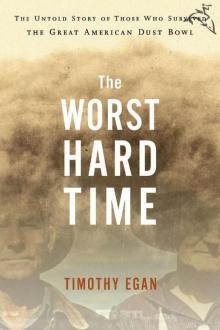 The Worst Hard Time: The Untold Story of Those Who Survived the Great American Dust Bowl
The Worst Hard Time: The Untold Story of Those Who Survived the Great American Dust Bowl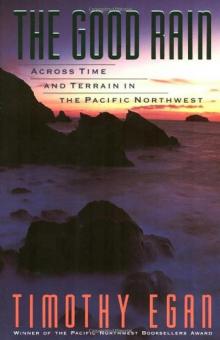 The Good Rain: Across Time & Terrain in the Pacific Northwest
The Good Rain: Across Time & Terrain in the Pacific Northwest Breaking Blue
Breaking Blue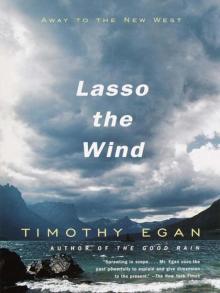 Lasso the Wind: Away to the New West
Lasso the Wind: Away to the New West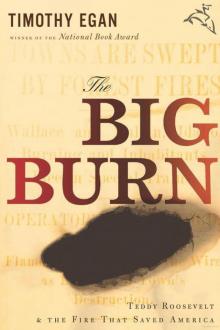 The Big Burn: Teddy Roosevelt and the Fire That Saved America
The Big Burn: Teddy Roosevelt and the Fire That Saved America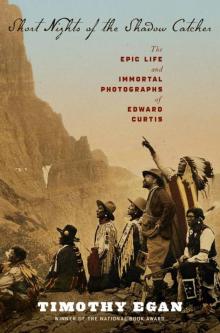 Short Nights of the Shadow Catcher
Short Nights of the Shadow Catcher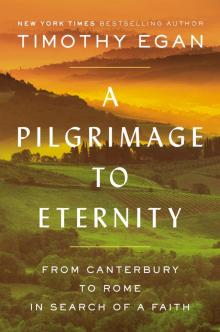 A Pilgrimage to Eternity
A Pilgrimage to Eternity The Worst Hard Time
The Worst Hard Time The Big Burn
The Big Burn